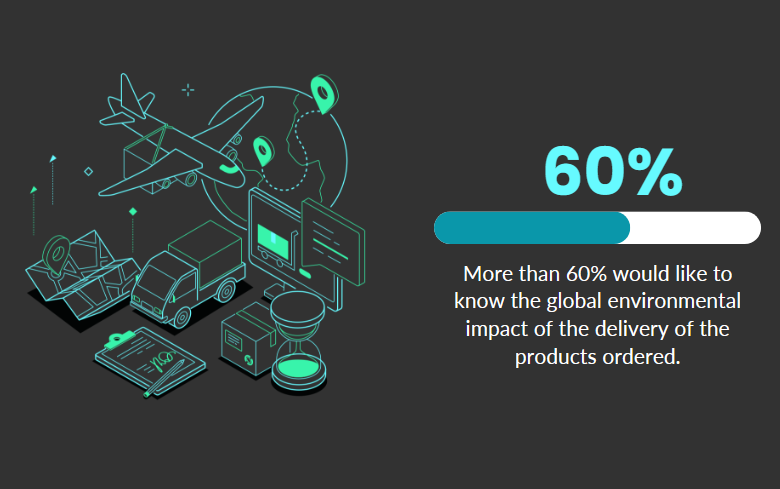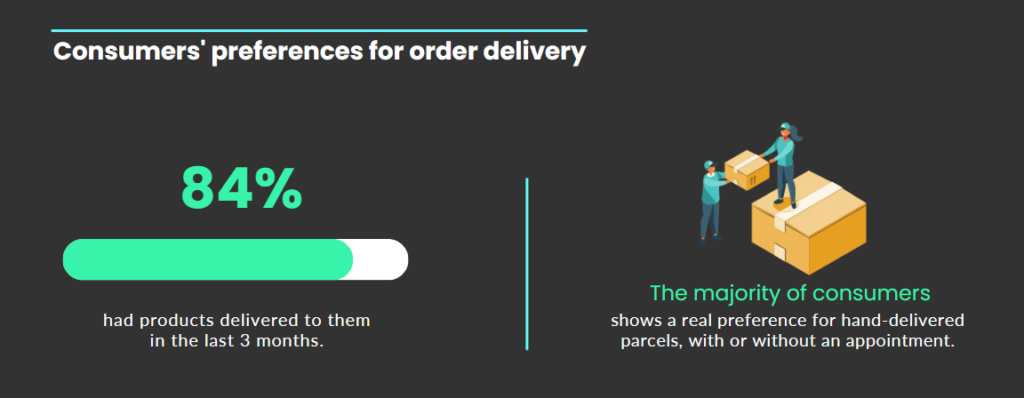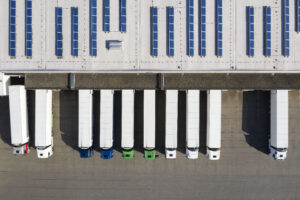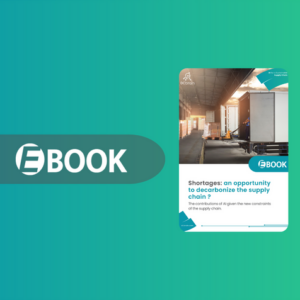
Survey – Decarbonize and display the ecological impact of your deliveries

Survey of retailers and e-retailers : is it in your interest to display the environmental impact of your delivery methods ?
By the end of 2022, DCbrain has carried out a survey of consumer delivery expectations in Germany, France and the United Kingdom. At the time of eco-responsibility and the booming of e-commerce, this survey gives relevant insights on the needs for transparency in the environmental display of deliveries. What environmental criteria are they paying attention to ? Which low-carbon delivery methods do consumers prefer ? How to display and calculate the environmental impact of its logistics ? Those are the questions our survey contributes to answer.
Consumers are aware of the need to decarbonize deliveries
This study was held on panel Toluna of 1,500 consumers from Germany, France, and Great Britain. In November 2022, we interviewed them :
– On their opinions regarding the ecological impact of e-commerce
– On their choices and preferences on delivery’s methods
Regarding the first question, the results were clear: nearly 80% of consumers are aware of the environmental footprint of online orders. However, 21% still need to be convinced. On the other hand, it is interesting to note that 60% of them would like more transparency on this subject : they would like to know the global environmental impact of the delivery of the products they order.
The survey also sheds some interesting light on desired delivery times. Consumers are not in such a hurry to be delivered: 66% say they are willing to wait between 2 and 5 days longer for a greener delivery.
Their opinions differ even more on the modes of transport and distribution channels responsible for these impacts. But here again, majority opinions emerge :
- For 45% of them and 51% of French, in-store delivery is less polluting than home delivery . They probably think that pooling deliveries is more ecological.
However, the vast majority of consumers prefer home delivery. Deliveries to relay points, consignments or click & collect only come in 2nd place.
- The modes of transport used do not leave them indifferent either: if they could choose the vehicle used, 33% would prefer transport by electric car. The other low-carbon modes of transport selected would then be the train or the bicycle for the last 5 kilometers.
Free delivery undermines decarbonization
The problem lies in the price! The price of delivery is the first criterion for choice. And the current crisis only reinforces this opinion, according to the 2023 barometer published by Woop.
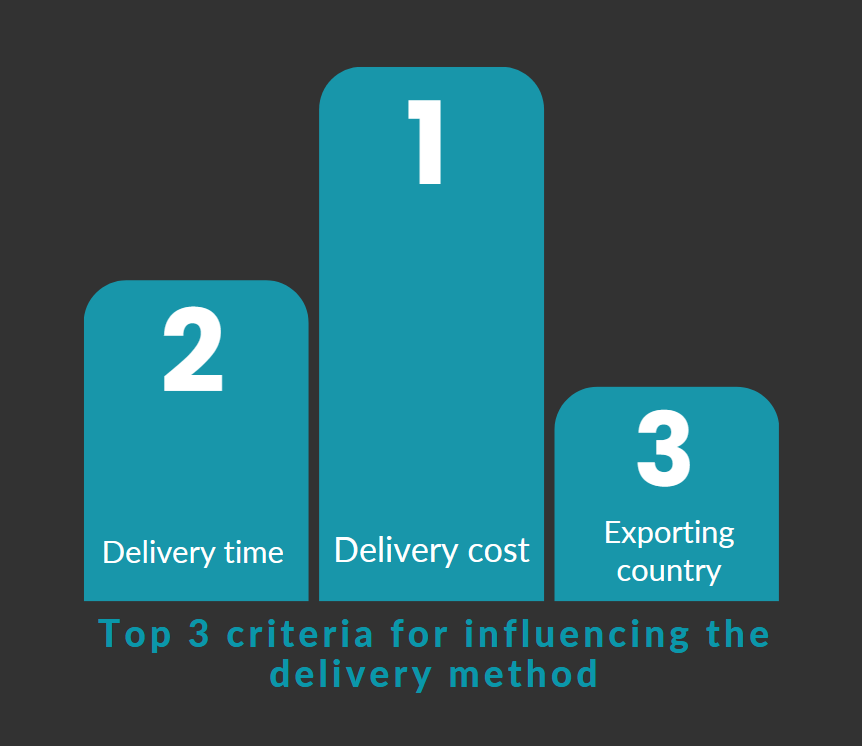
Only 22% of consumers are willing to pay more for greener delivery. This problem is even more complex, by the fact that consumers have become accustomed to the principle of free delivery. 16% of French people would pay no delivery charges at all:
– either because they have subscribed to Amazon Prime-type subscriptions
– or because they are offered free delivery when their order reaches a minimum purchase amount.
As Pierre Lupoglazoff, EVE Project Manager at ADEME, pointed out during our BRAIN UP on the 2023 perspective of the green supply, the delivery is never free. This statement misleads consumers and undermines the need for decarbonization, in particular by concealing the ecological and economic cost of fast deliveries. At the very least, it should be replaced by “offered”.
In reality, suppliers and/or retailers cut their margins or raise their prices to hide these delivery costs and encourage consumers to buy. This solution is not viable in the long term for the vast majority of merchant sites, nor does it meet the need for transparency expressed by consumers and legislators.
Calculate and display the environmental impact of your decarbonization deliveries.
Ideally, you should be as transparent as possible:
– on delivery costs by distribution channel and location
– but also on the means of transport used
– and the carbon footprint of each delivery method offered.
Thus, 70% of consumers would like to be informed about the means of transport used, and 44% consider the CO2 footprint to be the most relevant data for understanding the ecological impact of delivery.


Consumers are looking for more information, and might be willing to opt for greener delivery if the benefits were clearly displayed. How else could they turn to more responsible delivery methods on their own?
By informing them more precisely, retailers and e-tailers give consumers the power to reduce their environmental impact. Now that they are aware of the consequences of their choices on delivery times and methods, they can make informed choices. What’s more, the most ecological delivery option is often the least expensive. Which means they can satisfy their first criterion of choice: price!
Estimate the environmental impact of different delivery methods
From in-store pick-up to express home delivery, discover the CO2 impacts associated with each delivery route offered on Fnac.com(2). a well-known retail chain based in France that specializes in selling cultural and electronic products.
The methodology used to calculate these values has been independently verified by KPMG, an independent third-party organization in 2022.
Did you know?
CO2 emissions are reduced by grouping a large number of parcels in the same truck for a single delivery point.
Companies are actively investing in innovative strategies to reduce their emissions across all facets of their operations, in line with the policy priorities set by Ecommerce Europe. This commitment is closely linked to the goals of the European Green Deal, which aims to decrease greenhouse gas emissions by at least 55% by the year 2030.
There is a real demand for transparency on the part of consumers regarding the ecological impact of deliveries, depending on the mode of transport, location and delivery time chosen. This means that e-tailers need to have this data at their disposal, and make it more visible. However, it is not always easy to calculate the unit cost of these deliveries, as it depends on several factors:
– transit times
– the modes of transport used, sometimes multiple
– their load factor
– motorization, etc.
Thanks to AI-enabled digitization, DCbrain makes it possible to visualize the transport optimizations proposed by e-tailers, right down to the level of online orders. A further step towards visibility of their impact, in terms of reduced kilometers traveled and, consequently, reduced CO2 emissions.
Other articles
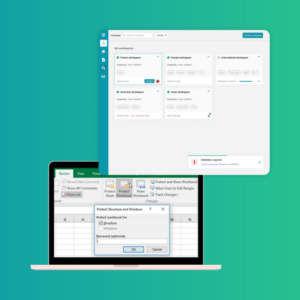
Excel or AI – the battle: which is the better solution for your transport plans ?
Learn more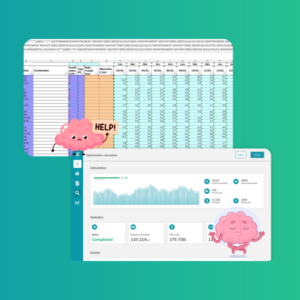
Transportation planning: why Excel might not be the right tool for your organization ?
Learn more
